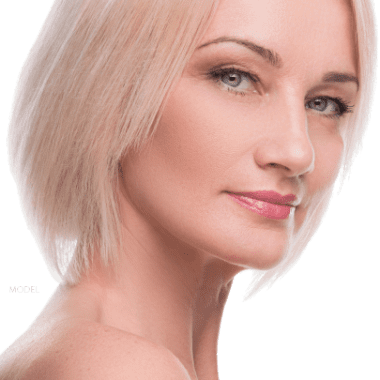
Beautiful skin can say a lot about your health and wellbeing. Your skin is your largest organ, and when it looks supple and bright, it can help you to appear and feel happier and healthier. Your complexion experiences stress on a daily basis. Acne, sun exposure, aging, smoking, and stressful lifestyles all wear on your skin, causing it to appear scarred, dull, or loose. Skin resurfacing offers mild to aggressive treatment for both common and more severe skin issues.
Your skin seems dull
Acne or facial scars are not responding to topical creams
Aging is causing wrinkles and facial lines
Sun exposure has caused hyperpigmentation
Your skin is losing firmness from diminishing collagen stores
Chemical peels resurface the face by removing damaged layers of skin. These chemical peels are available in a variety of strengths, ranging from mild to aggressive. The depth of the peel performed will depend on the degree of skin damage being treated. Your personal treatment options will be outlined for you depending on your skin, and your desired results.
A TCA (trichloroacetic acid) peel works by removing dead skin and encouraging new skin cell growth.
Geneo is a three-in-one facial rejuvenation system. This system consists of OxyGeneo, Tripollar RF, and Ultrasound that, when performed together, offer a comprehensive facial treatment. OxyGeneo provides skin renewal and oxygenation by creating an abundance of natural CO2 on the skin’s surface. Tripollar RF uses radiofrequency to penetrate the surface and help restore tone and tightness. Ultrasound technology is used to benefit the absorption of active ingredients.
The Lumenis® M22™ is a multi-application system that can be used to treat over 30 different skin conditions as well as perform laser hair removal with reliable outcomes. The Lumenis® M22™ combines photorejuvenation, intense pulsed light (IPL), and radiofrequency treatments to resurface the skin, minimize leg veins and vascular lesions, correct uneven skin tone, remove tattoos, and more. With continuous cooling, this treatment is as comfortable as it is effective.
The recovery period for chemical peels varies significantly depending on the strength of the peel. Mild aesthetician peels require little to no change in activity, and patients can manage any redness with makeup. Moderate to deep TCA peels, that address deeper lines, significant sun damage, or acne scars, result in noticeable peeling and redness for nine to 10 days, during which time, most patients choose to remain at home to heal out-of-sight.
Following a radiofrequency treatment, there will be mild redness and soreness; however, you can return to your normal activities immediately. It is important to keep your skin out of the sun to prevent sun damage, as this could negatively affect your results.
Results can last for years following the procedure, especially if you take steps to maintain those results. You should practice proper skin care, stay out of the sun, and focus on a healthy diet. In most cases, optimal results last longer for issues like hyperpigmentation and scarring than for wrinkles and other aging concerns.
Skin resurfacing can be performed as a standalone procedure; however, for patients who would like more dramatic anti-aging results, it may be performed in conjunction with a facelift or neck lift to enhance their results. While this combination is performed to complement each other, they may or may not be performed on the same day. When appropriate for correct candidates, resurfacing with lasers or chemical peels will be performed at the same time as your facial surgery. If not, your skin resurfacing will follow the recovery period of your surgical facial rejuvenation. During your consultation, Dr. Nelson will let you know if your treatments can be performed together or if it would be better to stagger them.
The skin resurfacing option that is best for you will depend on your goals and the severity of your current skin damage. Mild chemical peels may be better suited for patients with moderate scarring or mild skin imperfections, while laser treatments that can penetrate further may be best for deep facial lines. A consultation is the only way to know which option will address your individual set of needs.
Skin resurfacing may result in some minor pigmentation irregularities, textural changes, and increased sensitivity to the sun. The best way to reduce risk is to be sure a licensed esthetician or plastic surgeon performs your skin resurfacing procedure.
Before and After Photos - Individual results may vary. Some images may be models.
© 2025 Jeffrey M. Nelson, MD. | Site Designed & Hosted by Plastic Surgery Studios.